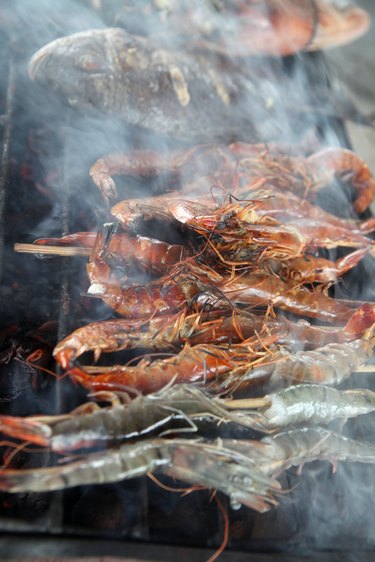
Smoking, as a mode of food preservation, is probably as old as cooking with fire. Heat and smoke infuse a delicate flavor into fish, ham, poultry and meat and can prevent the growth of microbes. While smoking done right is a very effective form of food preservation, care must be taken to avoid contamination and food-borne illness.
Types of Smoking
Video of the Day
Smoking can either be done hot -- in a kiln or smokehouse for a short period -- or cold -- over low heat for up to 24 hours. Hot smoking preserves foods in three ways: Heat kills microbes; chemicals found in the smoke -- including formaldehyde and alcohols -- act as preservatives; and the food dries out so there is less moist area for bacteria to grow. Cold smoked foods are typically preserved in some other way -- fermenting, salting or curing -- before the smoking process begins. Even with additional preservation steps, cold smoked foods should be cooked to an internal temperature of 160 degrees Fahrenheit before consumption.
Video of the Day